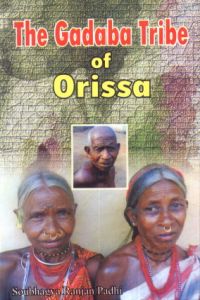
Contents: Acknowledgements. Preface. 1. Introduction. 2. Review of Literature. 3. Methodology. 4. Research Setting. 5. Identification of Respondents. 6. Socio-cultural transformation. 7. Economic Transformation of Gadaba Tribe. 8. Political transformation. 9. Religious transformation. 10. Summary and Conclusion. Bibliography.
The Gadaba is one of the primitive and colorful tribes of India, classified as speakers of Mundari or Kolarian language. They are seen in adjoining mountainous tracts of Andhra, Orissa, Chhattisgarh and Madhya Pradesh.
Gadaba society, in course of time, has experienced different processed of socio-economic transformation, under the impact of modern and traditional factors of change. The way our country is passing through the period of rapid socio-economic transformation, the tribal people in general and the Gadabas in particular are slowly but surely becoming aware of and assimilating some of the modern values while continuing their traditions and conventions. It is necessary to evaluate how far the socio-economic life of Gadaba community has changed over period of time due to various modernization processes.
Against this backdrop the present publication has critically evaluated the various intrinsic and valuable facets of Gadaba tribal heritage in its changing scenario. The purpose of this publication is to examine the kaleidoscope of the distinctive elements of Gadaba culture and to analyze the changes that are taken place in socio-cultural, religious, political and economic life of Gadabas. The major objectives of this volume is to identify the causes of their socio-economic transformation and to assess the success and bottlenecks of government as well as civil society interventions in tribal society to weed out the root of their backwardness and to suggest the ways to bring out a overall development in the socio-economic fabric of this tribe.
The author has discussed the issues and perspectives of tribal transformation, criticism of development perspective, scope, conditions and barriers of tribal development. While analyzing the critical issues involved in tribal socio-economic transformation, he has shared his enormous experiences of developmental process in tribal society. It is expected that the endeavor will provide intellectual stimulants to those who cherish interest in this field and generate curiosity to carry on further research in this area.